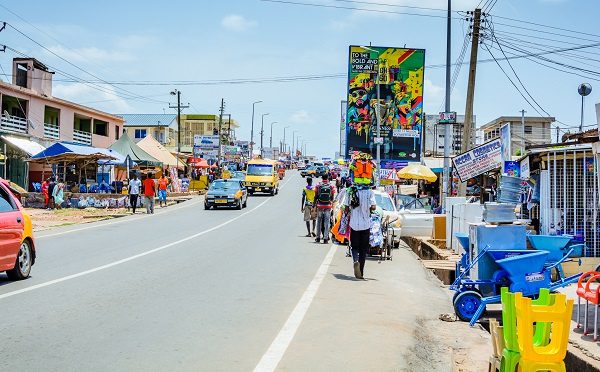This year’s Independence Day celebration will be held in Ho, the Volta Regional capital. This is in line with President Nana Addo Dankwa Akufo-Addo’s vision of regional rotation in celebration of the event, which hitherto had been centred in Accra. This year celebration is expected to sell the Volta Region to the world, and might lead to investors coming to invest in the region.
Less than a week to the celebration, preparations toward the event are far advanced to ensure a smooth anniversary celebration. I travelled to the Volta Region twice last month, and I retuned on one occasion with a broken tyre due to the bad nature of some parts of the road. I don’t know if the road leading to Ho has been improved prior to the celebration, since many people will be travelling to Ho. All commuters on that road will affirm that the road needs a face-lift.
The celebration is coming at the right time, and I hope this will lead to an improvement. Investors and tourists would love to travel on a smooth, beautiful road devoid of pot-holes. Three factors make every destination successful, and accessibility is one of the 3As in tourism. Without good accessibility to a destination, tourism will not thrive; and as we try to sell the region it must come with good accessibility, especially leading to our tourist sites.
An essential requirement for the development of tourism and most sectors of the economy is development of transport infrastructure and adequate accessibility to the surrounding areas. Transport infrastructure contributes to economic success based on tourism. For a majority of tourists, good accessibility to a tourist destination is when the area can be reached and explored quickly, cheaply and comfortably (e.g. by car or using public transport). Prideaux (2000) argues that a destination should be easy to get to and easy to travel around the area.
On the other hand, certain recent studies (Celata 2007; Toth & David 2010) indicate that there is no absolute connection between improvement of geographical accessibility, long-term tourism, medium-term tourism and short-term tourism. These studies also indicate that there is a significant difference between the theoretical models of tourism and actual tourist waves. A number of other studies (Komornicki et al. 2010; Michniak 2010, 2011; Rosik 2012) clearly indicate that nowadays networking and overall regional development must be based on detailed accessibility analyses. Optimisation of the transport system can then be achieved even if there is no direct impact on tourism.
Accessibility and tourism destination choice
The cost of travel is one of the main components of tourism expenditures; but distance is only one of many factors influencing the choice of destination. Many tourism areas have developed considerably despite their relative distance from competitors. A scarce accessibility can be balanced by other elements and even become a source of attraction itself. The hypothesis is that tourists choose their destination according, at first, to local resources and attractions.
In the decision process, tourists consider a number of alternative destinations with similar characteristics and attractions. Only after this first selection are destinations compared according to their accessibility. The weight of accessibility on the decision is then correlated with substitutability of other destinations. Localities possessing competitive advantages can attract tourists despite their relative distance. The problem of accessibility may thus be relevant only for destinations with similar characteristics – for example, the sea and sun.
Models of tourism are not for unique places like historic cities and nature sites. Accessibility per se cannot represent a source of competitiveness. We need to reverse the usual representation of the relationship between peripherality, accessibility and local development: competitive advantages do not arise from being closer to the market, but from the ability to use and promote the local attractive potential to reduce weight of distance. If a destination is unique, accessibility has no influence on its attractiveness.
Filippo Celata, Università di Roma, did a lot of studies in Italy to confirm the correlation between tourist flow to a destination. Assessing different destinations, he found that destinations with poor accessibility received low tourism flow – unlike destinations with better accessibility. This explains how road networks in Europe have been improved over the years and led to increased tourism flow. As we journey to Ho to celebrate our independence, we need to remember that the Volta Region has some of the best tourist attractions in the country; and the overall package for Ghana as a preferred tourist destination must lead to improvement in road development for all regions, thereby attracting transport vehicles/systems. Happy Independence anniversary to all Ghanaians.
Philip Gebu is a Tourism Lecturer. He is the CEO of FoReal Destinations Ltd., a Tourism Destinations Management and Marketing Company based in Ghana, with partners in many other countries. Please contact Philip with your comments and suggestions. Write to [email protected] / [email protected].
Visit our website at www.forealdestinations.com or call or WhatsApp +233(0)244295901/0264295901.Visist our social media sites Facebook, Twitter and Instagram: FoReal Destinations










